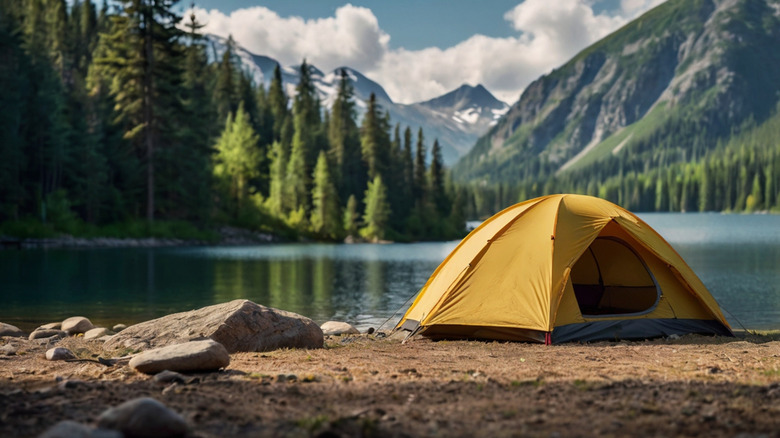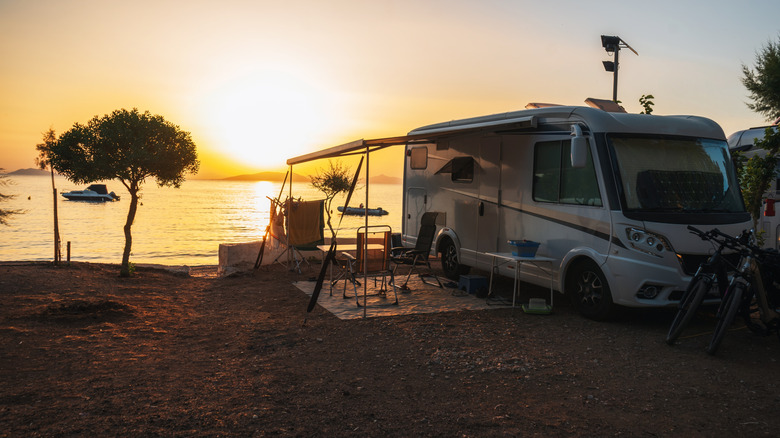Finding The Best Camping Spots On A Road Trip Is Easy Thanks To This Affordable Option
It's no secret that a big downside to RV camping (and camping in general) is actually finding a spot to settle in for the night. But if you're road-tripping through the U.S. and so over having to book expensive, crowded campsites months in advance, there's a not-so-secret trick among seasoned campers: head for public lands.
The U.S. Forest Service and Bureau of Land Management (BLM) offer access to millions of acres of campable land, often for little to no cost — and usually with far fewer neighbors. Unlike traditional campgrounds, these spots offer a back-to-nature vibe without the concrete pads, competition to find a spot, and RV park noise.
Some public lands do have developed campgrounds with basic amenities (think fire pit, garbage cans, potable water). But, there is also the option of "dispersed camping," which typically allows you to camp anywhere, as long as it's not specifically marked as a no-camping area or in an area that would harm wildlife or the environment. It gives you the freedom to maybe wake up next to a stream in Colorado or surrounded by colorful fall foliage in Blue Ridge — no reservations needed.
Camping on public land lets you roam free
One big drawback of camping in national parks is that campsite reservations often book out months in advance.The beauty of Forest Service and BLM camping is its flexibility. Apps like The Dyrt, Recreation.gov, and Campendium make finding free or cheap spots easy, often with crowd-sourced reviews, GPS coordinates, and warnings about road conditions (some areas require high-clearance vehicles or 4WD). It's smart to download maps ahead of time, since cell service isn't always reliable.
A major perk to many public land sites is that they're often near bucket list destinations, whether you're on a road trip from Salt Lake City to Yellowstone National Park or a breathtaking adventure with ocean views along the California Coast. For example, you can camp for free just outside Grand Teton National Park along Shadow Mountain in Wyoming and wake up to a million-dollar view without paying a cent.
Just keep in mind that the rules vary by location. Some camping areas have stay limits (typically 14 days), fire restrictions, or seasonal closures, so always check ahead of time either online or with the local ranger station. You should also camp away from recreation areas, trailheads, water sources, roads, and developed campsites. It's also always important to enjoy nature respectfully by following the Leave No Trace principles. With a little planning, BLM and Forest Service lands offer some of the most rewarding and wallet-friendly camping on the open road. You might even find your new favorite spot by accident.

